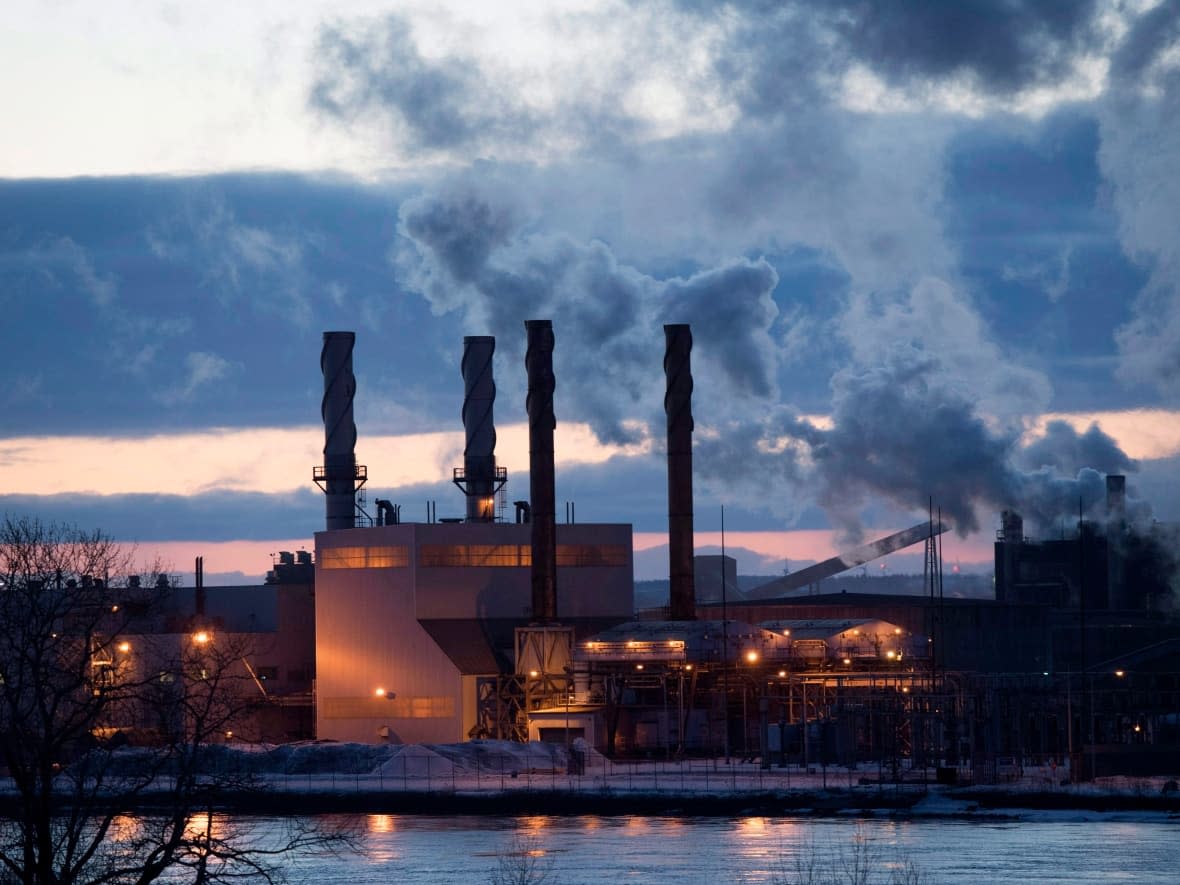Canada's carbon emissions rose in 2021 but were still below pre-pandemic highs: report

The independent Canadian Climate Institute says Canada's carbon emissions increased in 2021 over the previous year's amount but still remained below pre-pandemic norms.
The institute's principal economist, Dave Sawyer, said the "good news" is that emissions did not "bounce back" when COVID-19 lockdowns lifted.
"It's roughly a good news story that, yes, there is more activity coming out of COVID, but policy drivers and market drivers are working to keep emissions down," said Sawyer.
"They are lower than they would have been otherwise."
The institute estimates Canada's emissions in 2021 at 691 megatonnes. That's up from the previous year but still below the pre-pandemic level of 738 megatonnes.
Early Estimate of National Emissions (EENE) shows promising trends for 2021
The numbers are based on activity data, such as economic output from various sectors and oil and gas production levels. The institute uses trends in energy efficiency and emissions reduction drivers, such as carbon pricing, to offset the estimate. Much of the data comes from Statistics Canada and Simon Fraser University's Canadian Energy and Emissions Data Centre.
While Canada wasn't fully reopened in 2021 after pandemic lockdowns, the institute still concluded that the economy grew more rapidly than its emissions — which suggests Canada can expand its economy without experiencing a parallel increase in emissions.
The institute reports that emissions in 2021 were 2 per cent lower per unit of GDP than they were in the previous year.
The new estimates come ahead of Environment and Climate Change Canada's official numbers, which arrive in the spring.
The federal government lacks up-to-date figures on emissions. Ottawa's numbers have an 16-month time lag between when the emissions are released into the atmosphere and when they are reported. Those delays reflect the methodology the federal government uses and its consultations with provinces and territories.
The release of Thursday's estimate from the Canadian Climate Institute is an attempt to shorten those delays. Sawyer said more accurate estimates allow for "course correction" and "early action" by governments so Canada can meet its climate goals.
The institute has said it hopes to release its annual data eight months before the federal government releases its own numbers. That means the 2022 report should be released in August of this year.
The Canadian Climate institute estimates that emissions declined below 2005 levels — the benchmark year for Canada's 2030 climate targets — in all sectors except oil and gas, transport and buildings.
Projection of Canada's GHG Emissions by Economic sector (Projection year 2021)
The institute says early 2021 estimates suggest that climate policies initiated by individuals, businesses and the federal government — such as energy efficiency, public climate financing, the clean fuel standard and the carbon tax — are making a difference.
"We are seeing a response to those policies," said Seton Stiebert, an adviser to the institute. "We are hoping they accelerate."
Federal political parties had different interpretations of the report.
"After a decade of inaction from the Conservatives, we are effectively bending the curve on emissions," Environment and Climate Change Minister Steven Guilbeault said in a media statement.
Conservatives, meanwhile, said a government under party leader Pierre Poilievre would address climate change "through technology, not taxes." The statement from Conservative climate critic Gérard Deltell also hammers the Liberal record on lowering emissions.
"After eight years of Justin Trudeau, the Liberals have not met a single climate target they set for themselves, all while Trudeau's carbon tax has made everything from food to fuel more expensive for Canadians," Deltell said.
"Instead of admitting failure, Trudeau continues to make up new targets to miss and is tripling his expensive carbon tax on Canadian families."
Finance Canada officials say eight out of ten families receive more in rebates than they end up paying at the pump when the federal fuel charge is applied in backstop provinces.
While emissions have risen under the current and previous Liberal governments, they also increased under Conservative governments going back to the administration of Prime Minister Brian Mulroney.
Total emissions fell in 2019 and 2020 under the current federal government.
The NDP's climate critic Laurel Collins said the report shows Canada may be starting to turn the tide on climate change — but the Liberals still need to eliminate public financing of fossil fuel companies.
Green Party Leader Elizabeth May, who reviewed the numbers, said she doesn't think Canada should be congratulating itself.
May said Canada still has a lot of work to do if it wants to meet its climate targets — work such as banning hydraulic fracking and cancelling oil and gas projects like the Trans Mountain expansion and Bay du Nord.
"If we do those things, we've got a prayer of getting to real emissions reductions," she said.
The federal government's plan is to reduce emissions from where they are today to about 440 megatonnes by 2030, and then to net zero by 2050.


